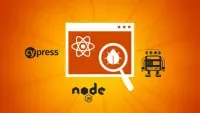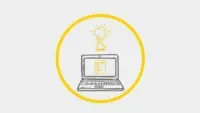
How to Register a Domain Set Up Hosting and Edit Web Pages

This free course provides step-by-step instructions on how to register a domain name, set up web hosting, create web pages, add pictures, links, video, WordPress, and PayPal to a website.▼
Course Feature
![]() Cost:
Cost:
Free
![]() Provider:
Provider:
Udemy
![]() Certificate:
Certificate:
No Information
![]() Language:
Language:
English
![]() Start Date:
Start Date:
Self Paced
Course Overview
❗The content presented here is sourced directly from Udemy platform. For comprehensive course details, including enrollment information, simply click on the 'Go to class' link on our website.
Updated in [April 29th, 2023]
This course will teach you how to register a domain, set up hosting, and edit web pages. You will learn how to purchase a domain name, create a website hosting account, make a simple web page, and use various methods to edit a web page. You will also learn how to upload a web page to a hosting account, monetize your website with affiliate links, get a ready-made website platform, install WordPress on your computer, recognize the various possibilities for eCommerce and blogs, learn more about advanced topics, add a PayPal button to your website, get the resources you need to succeed, and tie all the elements of a website together with a case study.
Course Overview: This course will provide you with the knowledge and skills to register a domain, set up hosting, and edit web pages. You will learn how to purchase a domain name, create a website hosting account, make a simple web page, and use various methods to edit a web page. You will also learn how to upload a web page to a hosting account, monetize your website with affiliate links, get a ready-made website platform, install WordPress on your computer, recognize the various possibilities for eCommerce and blogs, learn more about advanced topics, add a PayPal button to your website, get the resources you need to succeed, and tie all the elements of a website together with a case study.
Possible Development Directions: After completing this course, you will have the skills to create and manage your own website. You will be able to use various methods to edit a web page, monetize your website with affiliate links, get a ready-made website platform, install WordPress on your computer, recognize the various possibilities for eCommerce and blogs, learn more about advanced topics, add a PayPal button to your website, and get the resources you need to succeed.
Related Learning Suggestions: After completing this course, you may want to explore other topics related to web development, such as HTML, CSS, JavaScript, and PHP. You may also want to learn more about SEO, content marketing, and other digital marketing strategies. Additionally, you may want to learn more about web hosting, domain registration, and website security.
[Applications]
The application of this course can be seen in the ability to purchase a domain name, create a website hosting account, make a simple web page, edit a web page, upload a web page to a hosting account, monetize a website with affiliate links, install WordPress on a computer, create an eCommerce or blog website, add a PayPal button to a website, and tie all the elements of a website together. Additionally, the course provides resources to help users succeed in their endeavors.
[Career Paths]
1. Web Developer: Web developers are responsible for creating, designing, and maintaining websites. They use coding languages such as HTML, CSS, and JavaScript to create the look and feel of a website. They also use frameworks such as React and Angular to create interactive web applications. The demand for web developers is increasing as more businesses move online and the need for digital solutions grows.
2. Web Designer: Web designers are responsible for creating the visual elements of a website. They use tools such as Adobe Photoshop and Illustrator to create the look and feel of a website. They also use HTML and CSS to create the structure and layout of a website. Web designers must have an eye for detail and be able to create visually appealing websites.
3. SEO Specialist: SEO specialists are responsible for optimizing websites for search engine rankings. They use various techniques such as keyword research, link building, and content optimization to improve a website’s visibility in search engine results. SEO specialists must have a good understanding of how search engines work and be able to use the latest tools and techniques to optimize websites.
4. Content Writer: Content writers are responsible for creating content for websites. They use their writing skills to create content that is engaging, informative, and SEO-friendly. Content writers must have a good understanding of SEO and be able to create content that is optimized for search engine rankings. They must also be able to write in a variety of styles and formats.
[Education Paths]
1. Bachelor's Degree in Computer Science: A Bachelor's Degree in Computer Science is a great way to gain the skills and knowledge needed to design, develop, and maintain websites. This degree program will cover topics such as programming, software engineering, web development, database management, and more. With the increasing demand for web developers, this degree path is becoming increasingly popular and is a great way to get started in the field.
2. Master's Degree in Web Design and Development: A Master's Degree in Web Design and Development is a great way to gain the skills and knowledge needed to create and maintain websites. This degree program will cover topics such as web design, web development, user experience design, web analytics, and more. With the increasing demand for web developers, this degree path is becoming increasingly popular and is a great way to get started in the field.
3. Certificate in Web Design and Development: A Certificate in Web Design and Development is a great way to gain the skills and knowledge needed to create and maintain websites. This certificate program will cover topics such as web design, web development, user experience design, web analytics, and more. With the increasing demand for web developers, this certificate path is becoming increasingly popular and is a great way to get started in the field.
4. Online Courses in Web Design and Development: Online courses in web design and development are a great way to gain the skills and knowledge needed to create and maintain websites. These courses will cover topics such as web design, web development, user experience design, web analytics, and more. With the increasing demand for web developers, these courses are becoming increasingly popular and are a great way to get started in the field.
Pros & Cons
-

Clear and concise explanations.
-

Updated information.
-

Real world applications and examples.
-

Comprehensive for beginner level.
-

Detailed explanation on website creation.
-

Lacked material expected.
-

Version difference caused confusion.
-

Not enough detail on web hosting.
-

Technical difficulties.
-

Audio problems.
Course Provider





